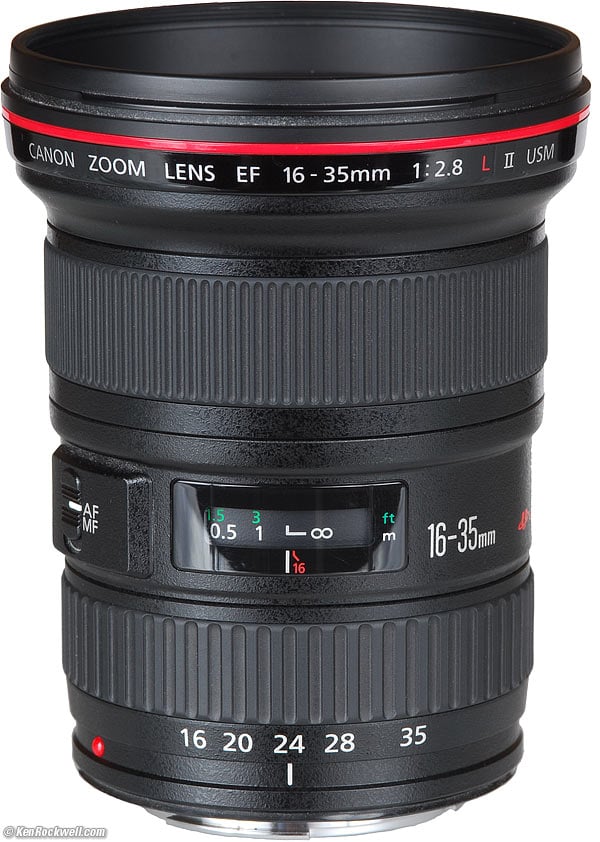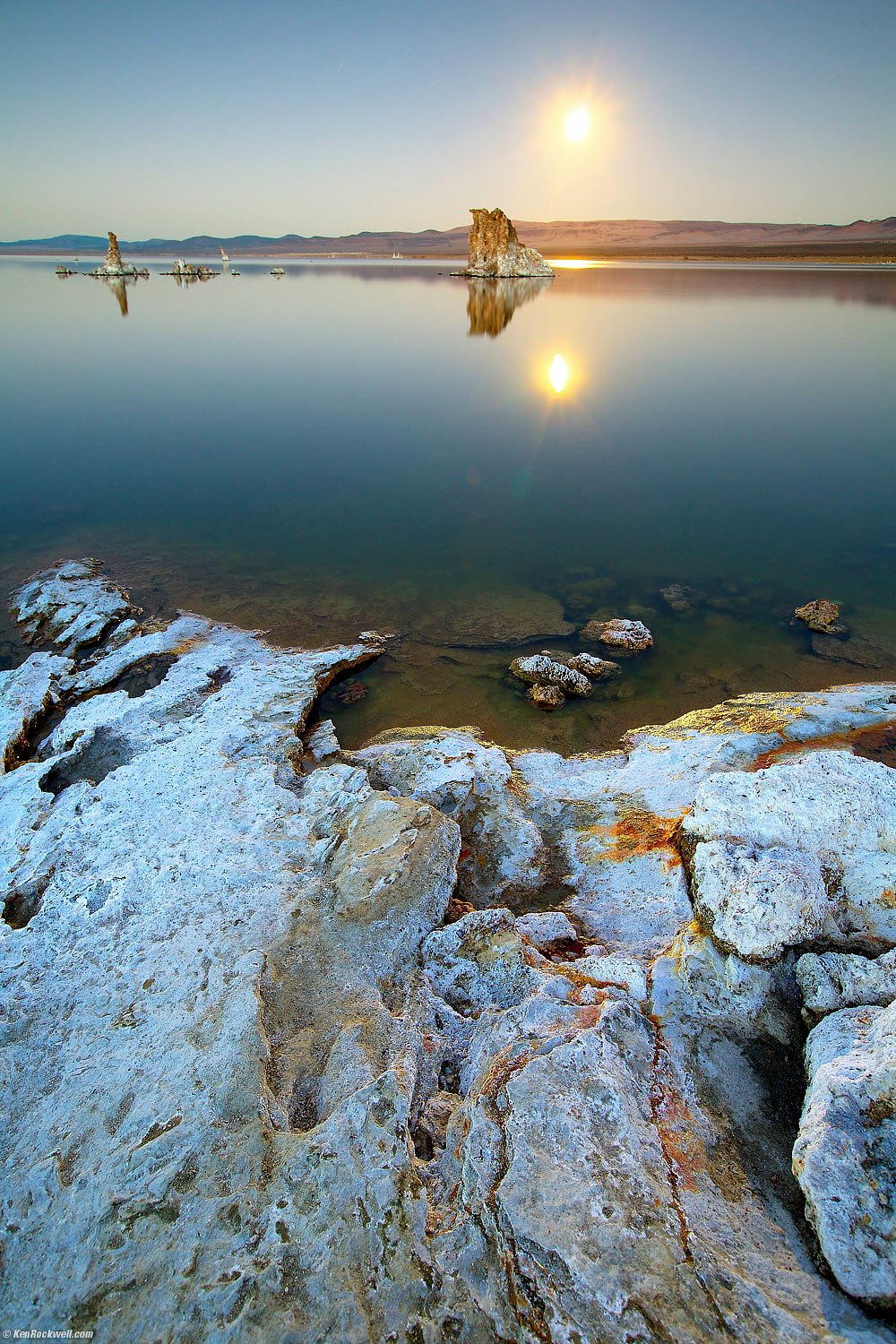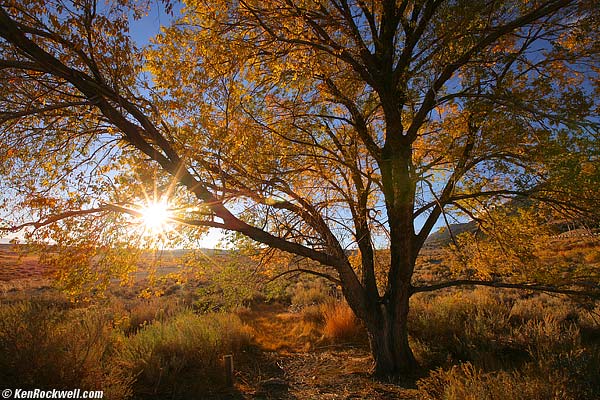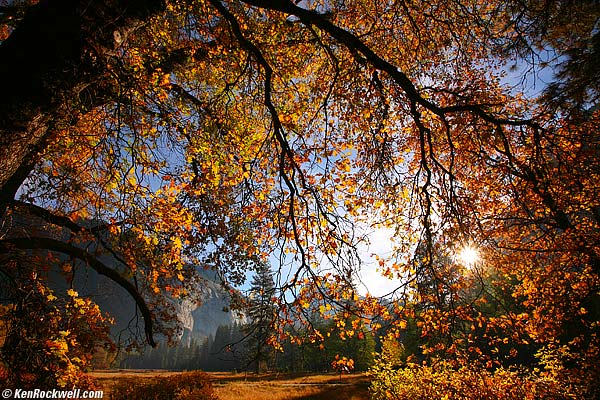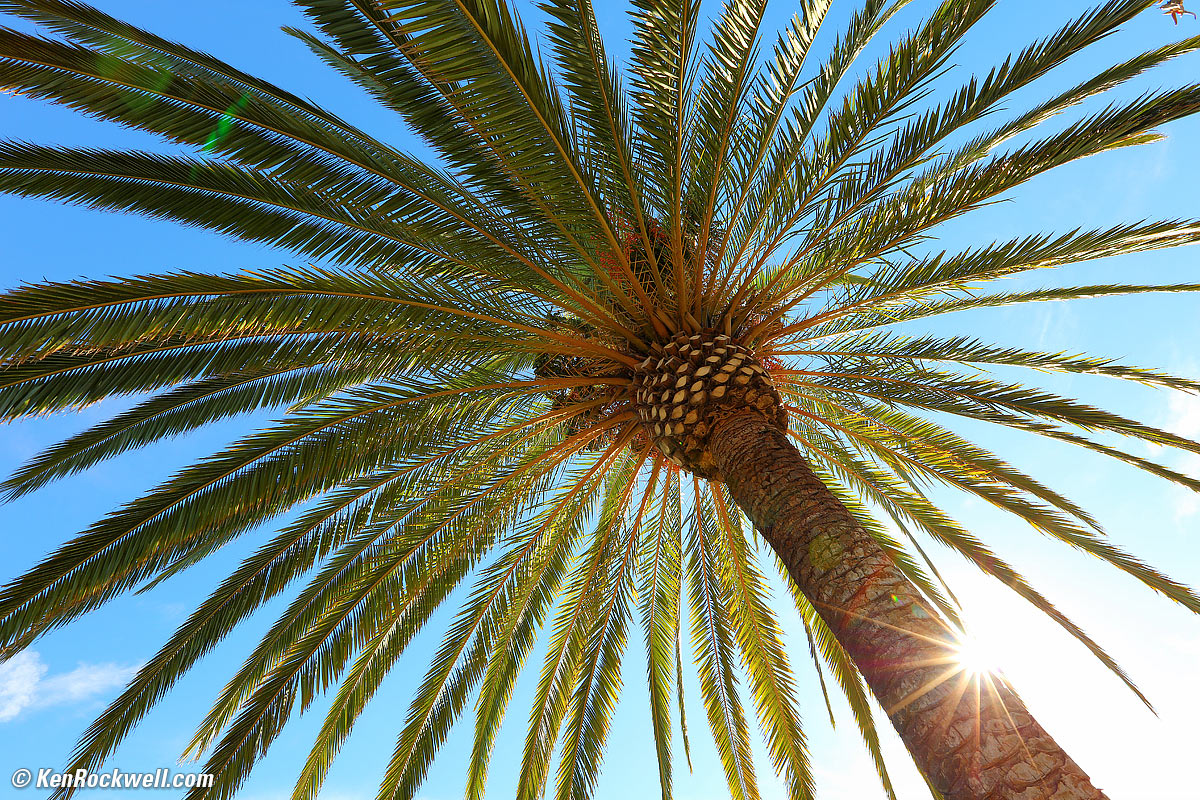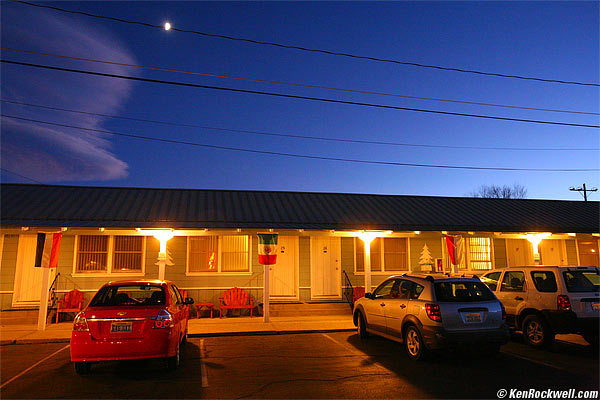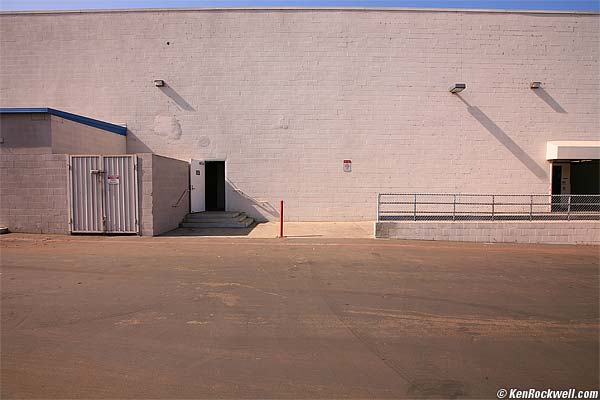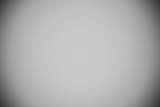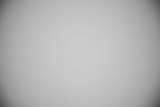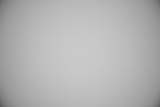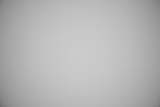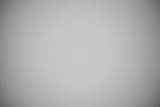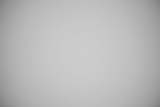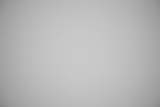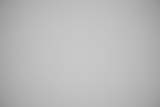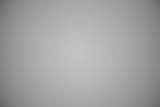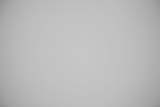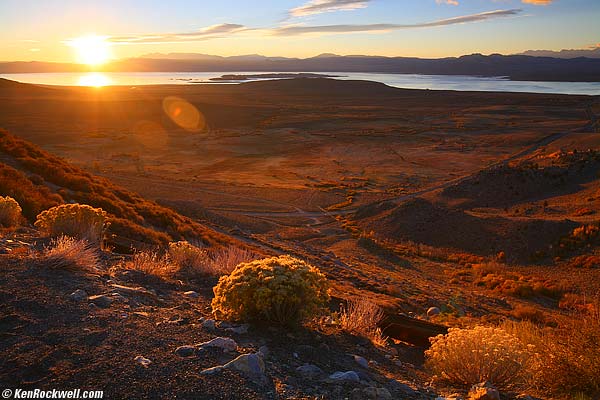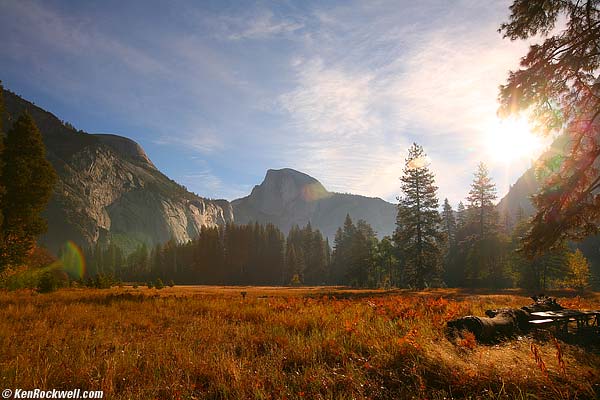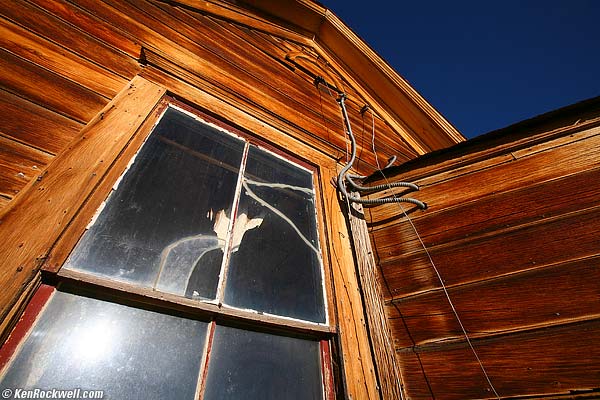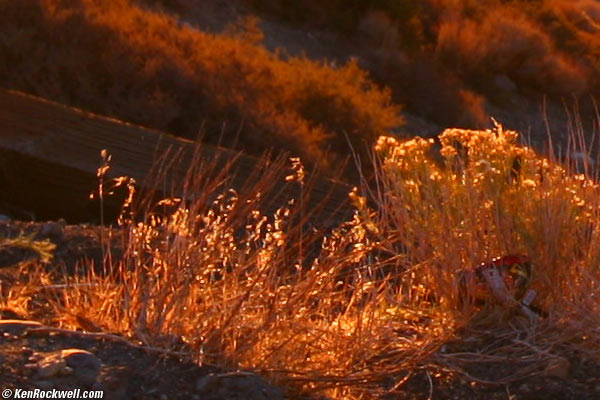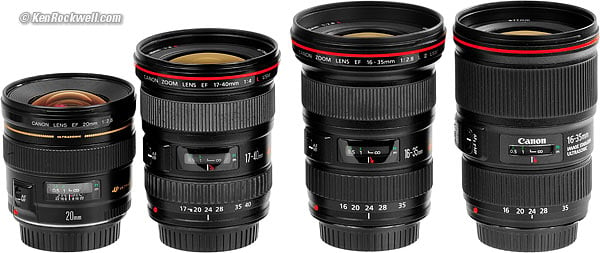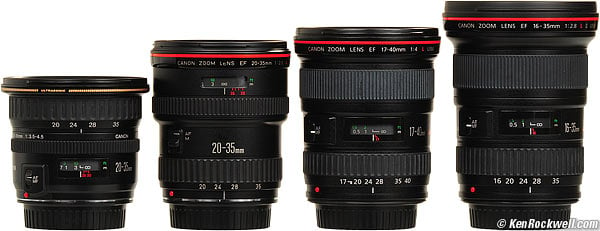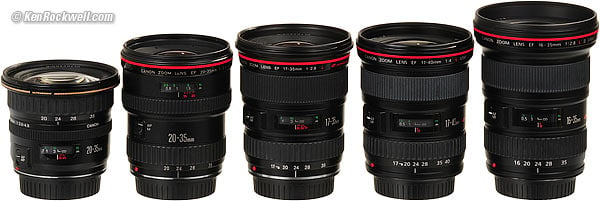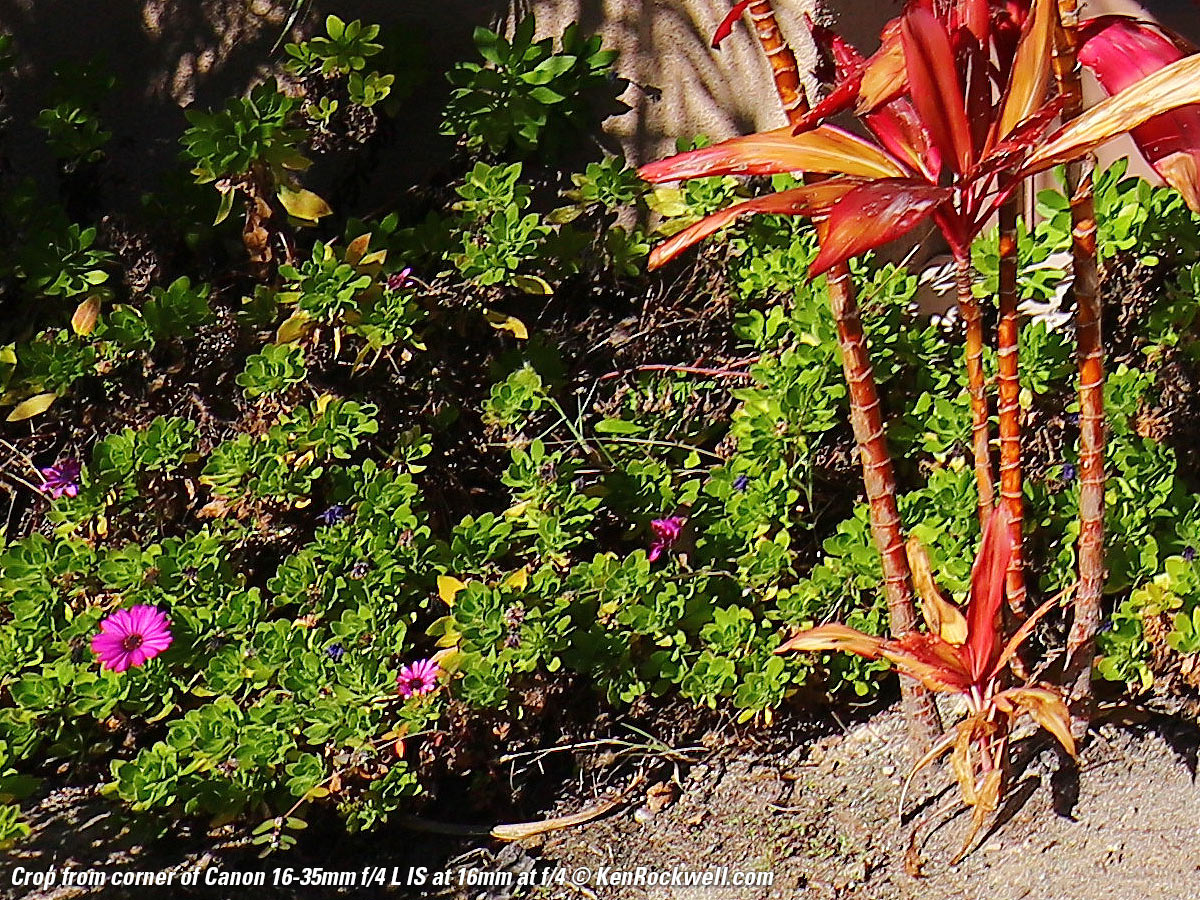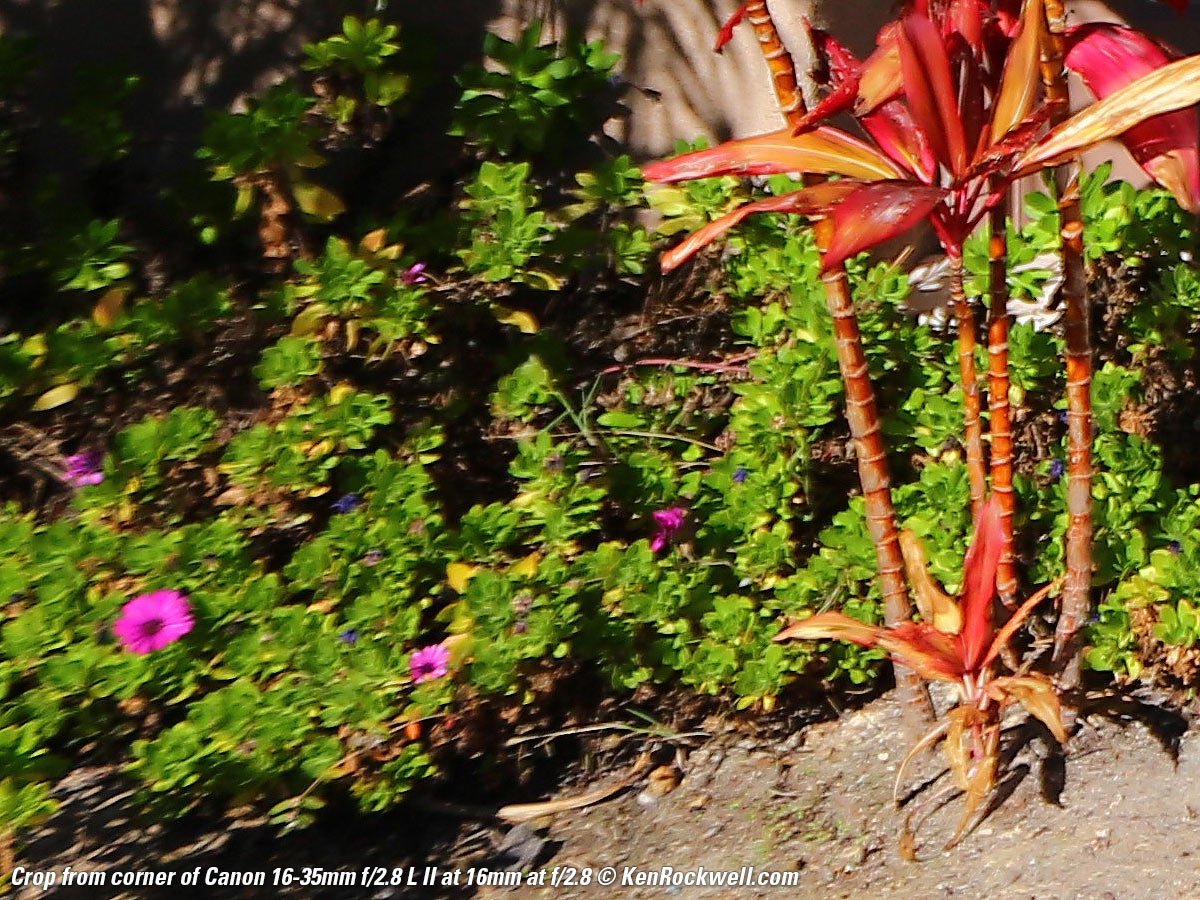Home Donate New Search Gallery Reviews How-To Books Links Workshops About Contact
Canon 16-35mm f/2.8 L II
Intro Specs Performance Compared Recommendations
Canon 16-35mm f/2.8 L II (metal 82mm filter thread, 22.4 oz./634 g, about $1,399 new or about $900 used if you know How to Win at eBay). enlarge. I got mine at this link to it at Adorama; getting it at Amazon is also highly recommended, as well as this link directly to them used at eBay. My biggest source of support is when you use those or any of these links to approved sources when you get anything, regardless of the country in which you live. It helps me keep adding to this free website when you get anything through these links — but I receive nothing for my efforts if you take the chance of buying elsewhere. Thanks for your support! Ken.
Adorama pays top dollar for your used gear, especially the older model 16-35mm L.
December 2016 Canon Reviews Canon Lenses All Reviews
Canon Ultrawide Lens Sharpness Comparison
Canon Ultrawide Lenses Compared
NEW: Canon 16-35mm f/2.8 L III (2016-today)
Canon 16-35mm IS (2014-today)
Canon 16-35mm f/2.8 L II (2007-2016)
Canon 16-35mm f/2.8 L (2001-2007)
Canon 17-40mm f/4 L (2003-today)
Canon 17-35mm f/2.8 L (1995-2001)
Canon 20-35mm USM (1993-2007)
Canon 20mm f/2.8 USM (1992-today)
Canon 20-35mm f/2.8 L (1989-1995)
Tokina 17-35mm f/4 (2011-today)
Canon 10-18mm IS vs. 16-35mm f/2.8 L II 12 June 2014
Sample Images (more throughout the review)
Moonrise over Mono Lake, 6:48 PM, 18 October 2013. Canon 5D Mark III, Canon EF 16-35mm f/2.8 L II at 21mm, f/8 for two minutes, Canon RS-80M3 remote cord with lock used to hold-open the shutter in Bulb. Yes, the moon moves in two minutes, but since this was only a digital camera and blows-out the disc of the sun or moon without detail even when shot as CR2 as I did here, you can't see it.) bigger.
The Milky Way as seen from Bridgeport, California, 8:12 PM, 22 October 2013. Canon 16-35mm f/2.8 L II at 16mm, f/2.8 at 32 seconds at ISO 6,400 (LV -8), Canon 5D Mk III with Canon RS-80N3 remote cord, shot as CR2, processed in Aperture 3 and Photoshop CS6. Bigger.
Dawn, Mono Lake Picnic Grounds. (at 16mm, f/16, uncoated 812 filter). bigger.
Dawn, Yosemite Valley. Canon 5D, 16-35mm f/2.8 L II with Tiffen 812 warming filter at 16mm, f/11 @ 1/80 (Av mode), -0.3 exposure compensation, ISO 100, hand-held (tech details). Exactly as shot in JPG. Camera-original file © (6MB).
Palm and Sunstar, 20 December 2016. Canon 5DSR, Canon 16-35mm f/2.8 L II at 16mm at f/11 at 1/60 at ISO 100. bigger or camera-original file.
Zeiss 21mm f/2.8 Compared to Nikon 14-24, Canon 16-35 L II and LEICA 21mm f/2.8 ASPH 16 December 2009
Zeiss 18mm f/3.5 Compared to Nikon 14-24mm and Canon 16-35mm L II 15 December 2009
Introduction top
Intro Specs Performance Compared Recommendations
|
Adorama pays top dollar for your used gear. I use these stores. I can't vouch for ads below.
|
This 16-35mm f/2.8 L II was Canon's top ultrawide for professional news, sports and action shooting. It was Canon's fastest and toughest — and most expensive — until it was replaced by the Canon 16-35mm f/2.8 L III at the end of 2016, The new Mark III is much sharper in the corners at f/2.8, but also more expensive, bigger and heavier.
For photographs of things that are not moving, the newer 16-35mm f/4 L IS is much sharper on the sides and corners at large apertures, as well as less expensive and it adds image stabilization (IS) so you can shoot at hand-held at 1/2 to 1/4 second just as sharp as if you had a tripod.
After thousands of shots, I couldn't make a technically bad shot with this f/2.8 lens on my 5D. I just kept cranking out winners. Skip to the Available Light and Flare sections to see some examples.
When I use any of these lenses, I'm usually using them at the 16mm or 17mm end. The 16mm end of the 16-35mm lens is much wider than the 17mm end of the 17-40mm lens, and is close enough that I no longer bother carrying my fixed 14mm f/2.8 L lens.
If you have an APS-C camera (Rebel, 70D, etc.), get the Canon 10-22mm EF-S instead for wide angles, or the Canon 17-55mm f/2.8 EF-S IS if you want f/2.8. You pay a premium for either of the L lenses because they are much larger to cover the larger sensors of full frame cameras, something you don't want if you're shooting a smaller-format camera.
Good
1.) Sharp enough, better than the original 16-35mm f/2.8, same as 17-40mm f/4 L.
2.) Easy operation; just works great and never gets in the way of a great photo.
3.) 7-bladed diaphragm for great sunstars.
Bad: Not much, but if I have to find something:
1.) Larger 82mm filter thread so you'll have to buy a bigger filter than the old 77mm filter you might have form another pro lens. (I can hold 77mm filters in front of the 16-35mm and they work fine).
2.) If brick walls are your thing, like all ultrawide zooms, there is plenty of distortion at 16mm. Shoot at 21mm and it goes away, or fix it in DxO.
3.) A little bigger and heavier than the previous big and heavy 16-35mm, but it's still quite reasonable to carry. It's a few ounces (100g) less than my 70-200mm f/4 L IS. It's comfortable to lug my 5D Mark III and this 16-35mm II around my neck all day.
Specifications top
Intro Specs Performance Compared Recommendations
Name
Canon calls this the Canon Zoom Lens EF 16-35mm f/2.8 L II USM.
EF: Electronic Focus. All modern Canon lenses focus with a motor in the lens.
L: Expensive as L. No exact meaning other than this being Canon's lingo for lenses with extra durability and weather sealing. L lenses work on all cameras including film and full-frame digital. Canon puts a red band around the front of these. See also Canon L Lenses.
USM: Ultra-Sonic Motor: The focus motor operates silently.
Focal Length
16-35mm.
Used on a 1.3x camera it gives angles of view similar to what a 20-44mm lens would give on a 35mm film camera.
On a 1.6x camera it gives angles of view similar to what a 26-57mm lens would give on a 35mm film camera. See also Crop Factor.
Maximum Aperture
f/2.8.
Optics

Internal Construction. Aspheric and UD elements.
16 elements in 12 groups.
Three of these elements are aspherical: one is an expensive custom-ground aspherical element, another is a replica (plastic) aspherical element and one is a glass-mounded (GMo) element.
Two elements are made of Ultra Low Dispersion (UD) glass (same as Nikon's ED glass), which helps reduce color fringing.
Diaphragm
7 blades.
Stops down to f/22.
It's round until f/4 and heptagonal from f/8.
It gives great 14-pointed sunstars.
Filter Size
82mm.
In the days of film this non-standard size would mean I'd have to buy another dozen filters just for this lens since today's pro standard size is 77mm, but for digital, all I'd have to buy is an 82mm Tiffen grad ND 0.6.
Don't buy a polarizer; polarizers rarely work well on ultra-wide lenses.
Close Focus
0.92' ( 0.28m) from the image plane (the back of the camera), marked.
Maximum Reproduction Ratio
1:4.5 (0.22 ×).
Focus Distance Scale
Yes.
Depth of Field Scale
NONE.
Infrared Focus Index?
Only at 16mm.
Size
3.486" diameter x 4.394" extension from flange (88.54 x 111.60mm), measured.
3.48" diameter x 4.39" extension from flange (88.5 x 111.6mm), rated.
Weight
22.375 oz. (634.3 g), measured.
22.6 oz. (640 g), rated.
The original 16-35mm weighs 1.230 oz (34.9 g) less, and the Canon 17-40mm f/4 L weighs 5.670 oz (160.7g) less.
Hood
EW-88, included.
Case
LP1319, included.
Introduced
March, 2007.
Canon Model Number
EF16-35L2.
Canon Product Code
1910B001.
JAN
4960999-416632.
Price, USA
December 2016: $1,399 new or about $900 used if you know How to Win at eBay (230,000 yen catalog price in Japan).
August 2016: $1,499 new or about $900 used if you know How to Win at eBay (230,000 yen catalog price in Japan).
April 2014: $1,699 new or about $1,300 used if you know How to Win at eBay.
Christmas 2013: $1,549 at checkout. final price after mail-in-rebate: $1,349.00.
July 2012: $1,619.
Late 2007-13 January 2008: $1,399 after rebate.
Performance top
Intro Specs Performance Compared Recommendations
Autofocus Available Light Color Color Fringes
Construction Distortion Ergonomics Eyeblow Falloff
Film Filters Flare Sharpness Sunstars Zooming
The Canon 16-35mm f/2.8 L II is a great lens that just works. When mine arrived, I took it out and shot with it for two weeks in California's Eastern Sierra and Yosemite before I bothered to pick it apart with any formal tests.
The results for real photos are simply stunning. You ought to see them on a 30" monitor or in print! All I can show on your screen are much smaller vignettes.
Focusing back to Performance or back to Introduction.
Focusing is excellent in every way. It's much more consistent than the original 16-35mm.
What Moves
The focus is entirely internal. Nothing moves externally when autofocused.
Ease of Manual Focusing
Excellent. Just grab the ring. Manual focus requires no switches.
Speed
AF speed, like most wide lenses, is just about instantaneous.
Autofocus Offset
I get dead-on focus on my 5D.
Autofocus Consistency (how often is it in focus?)
I get perfect focus every time on my 5D. This is much better than the original 16-35mm f/2.8, with which I got a disturbing few percent of images that were simply out of focus, even though the AF system confirmed that it was locked on.
We pay for the speed of the Canon AF system in that a small percentage of shots, even when the AF system confirms perfect focus, are simply out of focus. Nikon may be a little slower, but it never misses.
The percentage of misses varies with lens and camera, from 100% OK, as I get with this 16-35mm II and my 5D, to several percent bad, as I get on my Rebel XTi and some other lenses as mentioned in their respective reviews.
Focus Breathing
Breathing is a motion picture term which refers to what happens as you pull (change) focus from near to far while the camera and subjects remain in the same place. I list this for people putting these lenses on their Canon XL-1s for shooting video.
At 35mm there is no breathing.
At shorter settings like 16mm, the magnification reduces as one pulls focus closer. This is the opposite from most traditional lenses. Also, with a fixed camera and subject, the distortion becomes more barrel as one pulls focus closer.
Available Light back to Performance or back to Introduction.
f/2.8 lenses are more than fast enough for hand-held night shooting with digital cameras. f/1.4 lenses are for shooting my favorite ISO 50 Fuji Velvia.
With digital cameras, ISO 3,200 is eminently usable, and even f/5.6 lenses are fine.
Here's a hand-held grab shot:
Redwood Motel, Bridgeport, California. (at 25mm, 1/6 of a second at f/4, hand-held, ISO 3,200, 5D.)
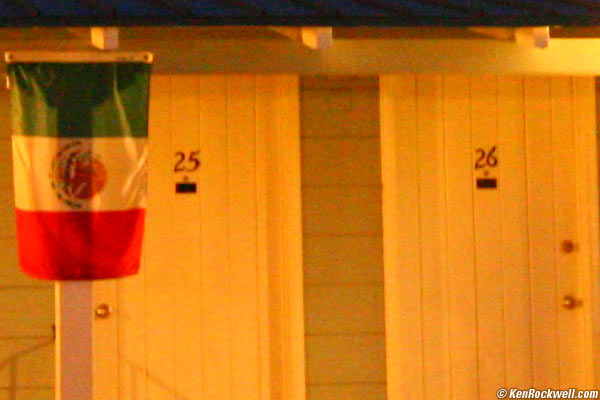
Unsharpened, unaltered crop from center at 100% (44" [1.1m] wide print).
And here's another hand-held shot while having dinner:
Rhino's Bar and Grill, Bridgeport, California. (at 16mm, f/2.8 at 1/5 second, hand-held, ISO 800, 5D.)
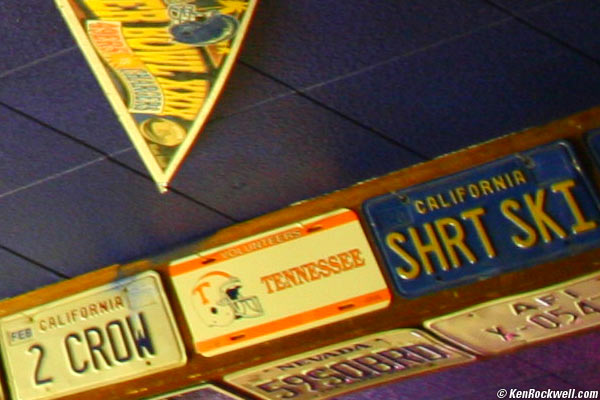
Unsharpened, unaltered crop from bottom right at 100%. (44" [1.1m] wide print).
This is a huge improvement over the original 16-35mm f/2.8, which got very soft and fuzzy in the corners at 16mm and f/2.8.
back to Performance or back to Introduction.
There are none on Canon's 2012 and newer cameras like the 1DX and 5D Mark III, which correct these automatically.
For use on older cameras, this lens is approved by the PPLFPA, Professional Patio and Lawn Furniture Photographers' Association, with a grade of "A-."
You really have to go out of your way to see any, and even if you do, they are only at the widest end. There are none at the longer end.
Here are the full guide images from which the crops are taken:
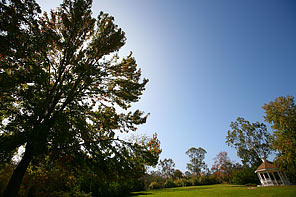 |
 |
Full image, 16mm |
Full Image, 35mm |
|
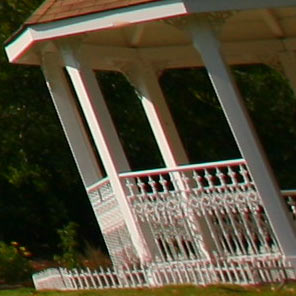 |
100% crop from 5D at 16mm, f/5.6 |
100% crop from 5D at 20mm, f/8 |
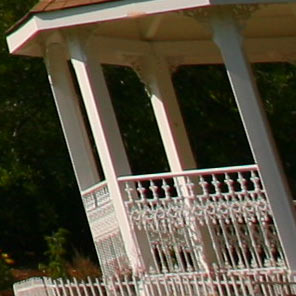 |
 |
100% crop from 5D at 24mm, f/5.6 |
100% crop from 5D at 35mm, f/8 |
On newer cameras, there won't be any color fringes.
Color Rendition back to Performance or back to Introduction.
I see no differences from my other Canon lenses.
back to Performance or back to Introduction.
It has a rubber gasket on the lens mount to keep crud out of your camera.
Exterior
Plastic and metal.
Filter Threads and Hood Bayonet
Anodized aluminum.
Filters have a tendency to unscrew themselves from these metal lens threads, so keep checking to be sure you don't lose any.
Focus Ring
Rubber-covered metal.
Markings
Paint.
Switches
Plastic.
Mount
Metal.
Internals
I see mostly metal.
Noises when shaken
Klunking, which is normal.
Serial Number
Engraved and filled with black paint in an indentation of the mating surface of the mount.
Hot-stamped in plastic on rear of lens.
Made in
Japan.
Distortion back to Performance or back to Introduction.
Wide angle lenses are supposed to stretch round things, like people's heads, out towards the edges of the frame . This sucking is why we love ultra-wide angle lenses.
Straight lines should always remain straight. When they curve slightly, that's the undesirable distortion of which I speak.
The distortion of the Canon 16-35mm II is typical for any ultrawide zoom: complex barrel distortion at the widest end and pincushion at the longer end.
If you waste your time shooting brick walls straight-on, an ultrawide is the last lens you'd want. Like most ultrawide zooms, shoot in the middle of the range to get the least distortion. Shoot the Canon 16-35mm f/2.8 L II at 20mm and the distortion goes away for shooting straight lines parallel to the frame edges.
The proper way to shoot walls is at an angle, in which case distortion is invisible:
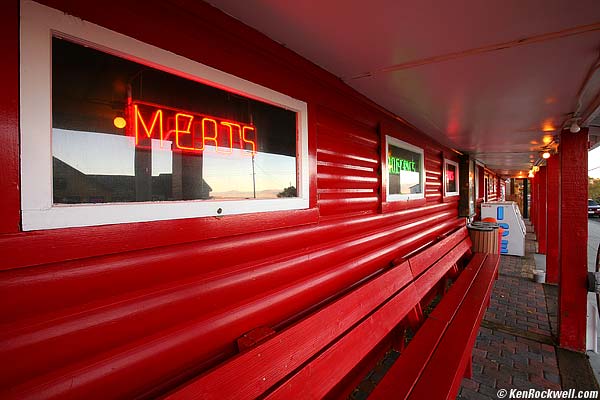
Red Market, at 16mm.
If you shoot head-on, you'd better make sure it's an interesting wall. Shoot at 21mm and there's no problem.
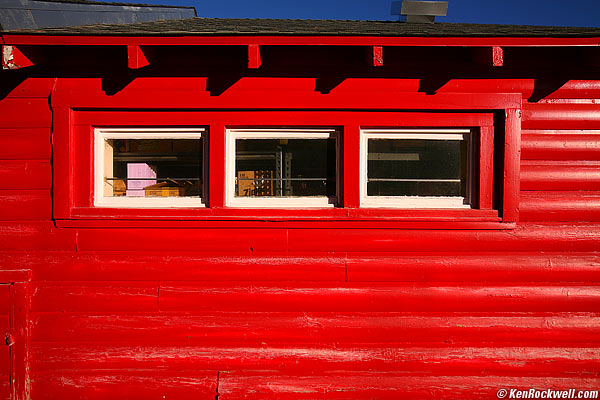
Red Market, at 21mm.
Brick walls worth shooting are rarely straight.
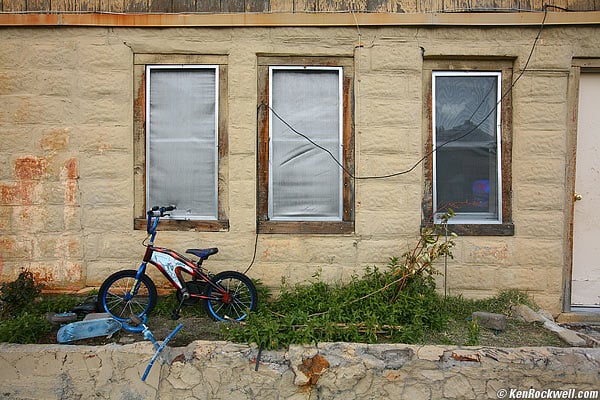
Brick wall, at 21mm.
If you're silly enough to shoot a blank wall straight-on at 16mm, you'll get this:
Wall of Shame at 16mm.
Roll mouse over to see after correction in Photoshop CS2's lens distortion filter at +3.5.
Plug these figures into Photoshop CS2's lens distortion filter to correct the distortion.
at 50' (15m) |
|
16mm |
+3.5 barrel. |
20mm |
0.0: none. |
24mm |
-1.2 pincushion. |
28mm |
-2.1 pincushion. |
35mm |
-2.0 pincushion. |
Even after this simple correction in Photoshop, some waviness will remain if you're looking for it. If this is you, use DxO for better correction.
Ergonomics back to Performance or back to Introduction.
Excellent. Nothing gets in the way of a great photograph.
There are no switches required for macro ranges or manual focus.
The only switch on the 16-35mm II is a switch marked AF-MF, but manual focus is available any time you grab the focus ring. The switch's only purpose is to deactivate AF when set to MF.
It's a good-sized lens, but lighter than it's Nikon 17-35mm f/2.8 counterpart. The Canon 16-35 II is actually quite light when used on the all-plastic Canon EOS Rebel G, and delivers great results.
Exposure Accuracy back to Performance or back to Introduction.
Perfect, no problems seen.
Eyeblow back to Performance or back to Introduction.
None: no wind blows out the eyepiece as I zoom.
back to Performance or back to Introduction.
I saw no falloff in any of the thousands of real photographs I made with the 16-35mm II, even at 16mm at f/2.8 in dark interiors with old cameras.
If I deliberately look for it, yes, it's got a lot of falloff at 16mm at f/2.8. Otherwise, I never noticed it.
2012 and newer cameras like the 1DX and 5D Mark III can correct this automatically.
The shots below of an Expodisc greatly exaggerate falloff. I never saw this in thousands of real shots.
